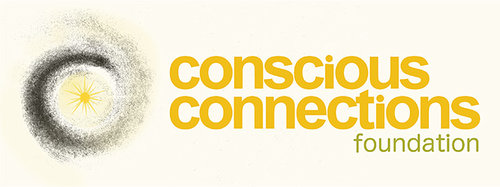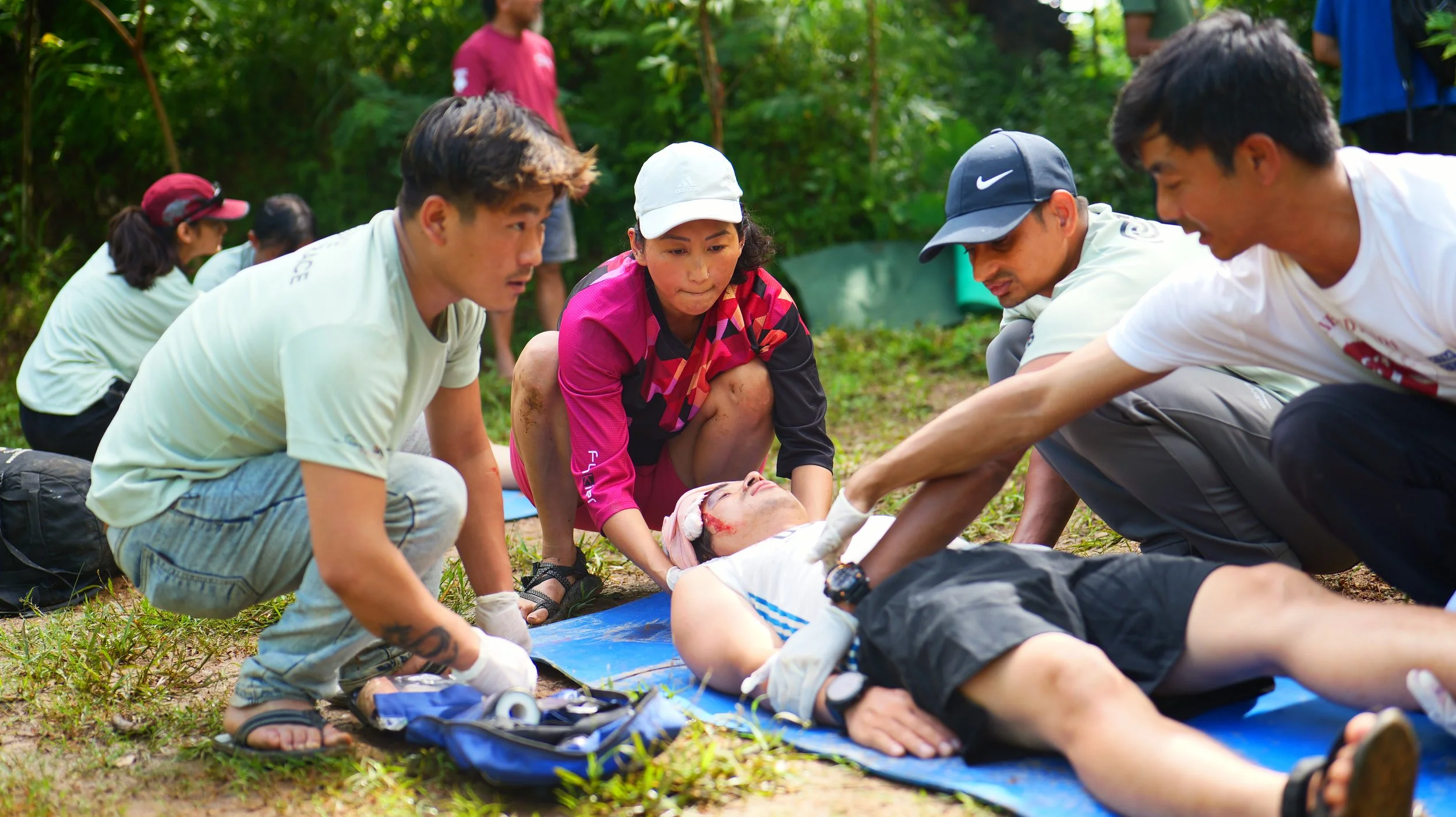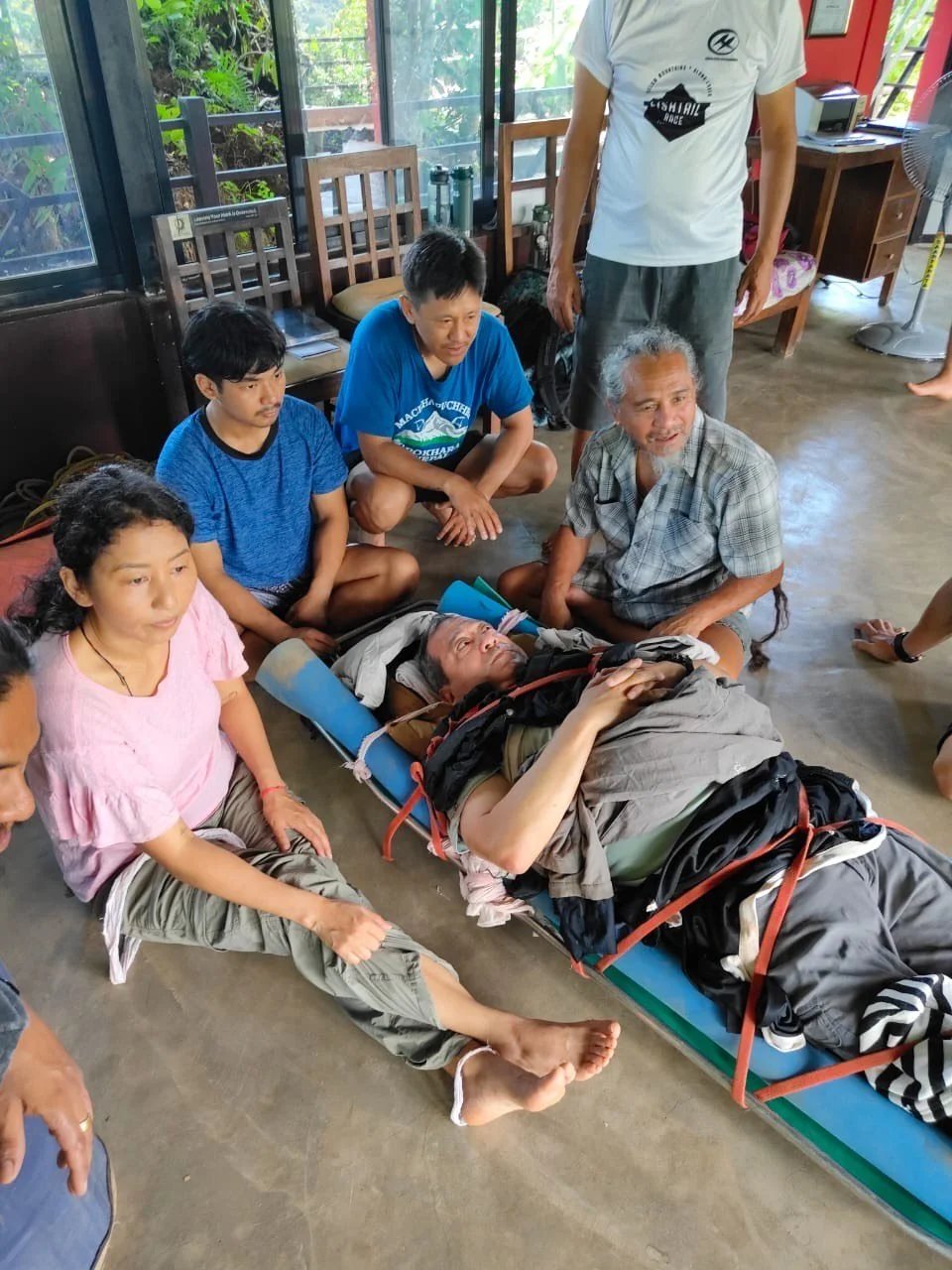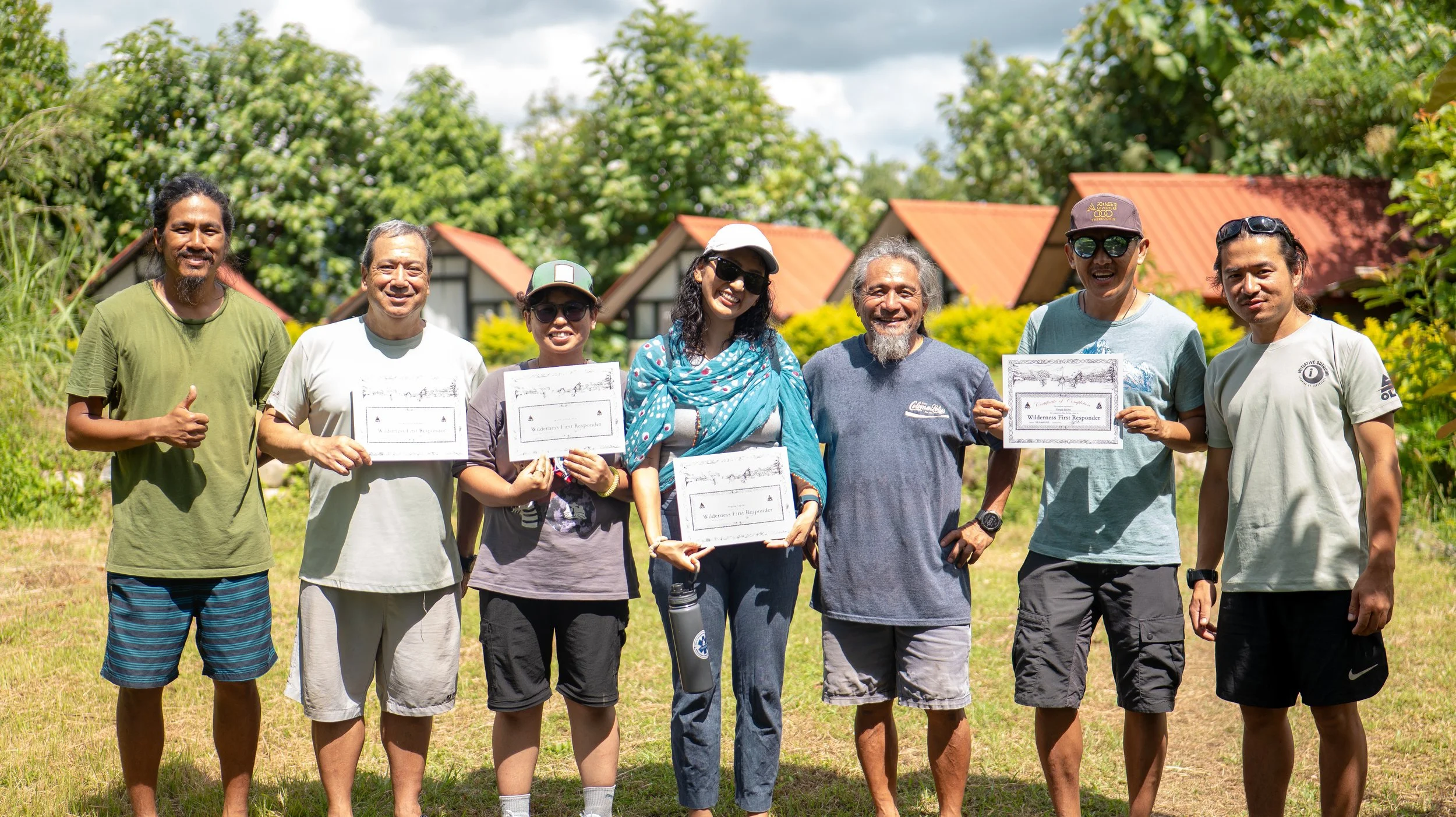A four-hour drive from Kathmandu would forever change how we think about emergency preparedness in remote areas.
Written By Kesang Yudron, Founder and Director of Conscious Connections Nepal
The winding mountain roads carried us away from the bustling streets of Kathmandu toward the serene hills of Bandipur, where our 10-day Wilderness First Responder (WFR) training awaited. Organized by Initiative Outdoor Nepal and offering SOLO (Stonehearth Open Learning Opportunities) certification, this intensive program would soon prove to be one of the most valuable experiences of our lives.
Why Wilderness First Aid? A Question That Answered Itself
Initially, I questioned whether I really needed wilderness first aid training. That doubt quickly dissolved when I considered the reality of our work. Our programs take us deep into remote regions like Sankhuswabha in northeastern Nepal, where the nearest functioning hospital can be days away. We’ve encountered lightning storms and landslides that delayed our journeys between villages, leaving us completely cut off from medical assistance. In these moments, the question shifted from “Why do I need this?” to “How can I afford not to know this?”
The sobering truth hit home: when you’re hours or days from professional medical help, you become the first—and possibly only—line of defense against medical emergencies.
Photo Credit: Conscious Connections Nepal
A Comprehensive Journey Through Wilderness Medicine
The SOLO Wilderness program unfolded as a meticulously structured 10-day immersion into pre-hospital medicine. From learning proper patient consent procedures to conducting thorough patient assessments, developing rescue plans, and understanding human anatomy, physiology, and pathophysiology, every element was designed to transform us into capable wilderness first responders.
Days 1-3: Foundation Building
The first three days focused on fundamental first aid training alongside 25 participants, many of whom were mountaineering guides from Nepal’s thriving tourism industry. Conducting the training in Nepali ensured that local guides could fully grasp these life-saving concepts and apply them with their clients.
Photo Credit: Conscious Connections Nepal
We tackled everyday ailments that can quickly become serious in remote settings: treating bruises and controlling bleeding, managing dehydration and food poisoning, addressing sprains and respiratory issues. Each lesson carried personal weight—I couldn’t help but think of my cycling accident from years past that resulted in a keloid scar. Had I possessed this knowledge then, I could have managed that injury far more effectively.
For Igroom, who had previous first aid experience, the course served as both a refresher and confidence booster. She found herself more assured in handling bleeding emergencies and performing CPR, skills that felt more natural after hands-on practice in realistic scenarios.
Beyond the Basics: Skills That Save Lives
What truly distinguished this program was its emphasis on improvisation and adaptation. Working with limited resources, we learned to create medical equipment from whatever was available—a crucial skill when your “medical kit” might consist of hiking gear and natural materials.
The practical emergency scenarios were intense and enlightening. Each simulation began with the critical safety assessment: Is it safe for me to enter this scene? We learned to don protective equipment systematically—gloves, masks, and any other barrier devices available—before approaching any patient.
The primary assessment protocol became second nature: Airways, Breathing, Circulation, Deformation, and Environment. This systematic approach helps identify immediate life threats in those crucial first minutes. The secondary assessment taught us to build a complete medical picture through vital sign monitoring, patient history gathering, and thorough documentation—skills that become invaluable when eventually transferring care to medical professionals.
The Art of Knots: Engineering Safety in the Wild
Photo Credit: Conscious Connections Nepal
One unexpected treasure trove of knowledge was learning various knots and loops: figure-eight knots, bowlines, clove hitches, and others. These weren’t just rope tricks—they became essential tools for creating improvised splints, building emergency shelters, and executing complex rescue operations. Discovering this “vault of knowledge” felt like unlocking a secret language of wilderness safety. We practises making the knots many times until it felt second nature.
Water Rescue: Confronting Our Deepest Fears
Perhaps the most memorable—and nerve-wracking—component was the water rescue training. Swimming in a mountain stream while learning to assist drowning victims tested both our physical capabilities and mental resolve. We practiced rescue breathing and CPR in realistic conditions, but the most crucial lesson echoed throughout: don’t become the second victim. This principle of self-preservation isn’t selfish—it’s strategic. A rescuer who becomes another casualty helps no one.
Real-World Impact: Beyond Personal Preparation
This training illuminated a broader truth about disaster preparedness. Consider Nepal’s devastating 2015 earthquake: hospitals were overwhelmed, roads were impassable, and communities were isolated for days or weeks. In such scenarios, widespread first aid knowledge among the general population could mean the difference between life and death for countless individuals.
The ripple effect of wilderness medicine training extends far beyond personal preparedness. Every person trained becomes a potential lifesaver in their community, workplace, and family. Mountain guides can better protect their clients, teachers can respond to student emergencies, and ordinary citizens can step up during natural disasters.
A Vision for the Future
We believe WFR training should be integrated into school curricula nationwide. The skills learned here aren’t just for wilderness enthusiasts—they’re life skills that serve everyone, everywhere. From urban emergencies where ambulances might be delayed to rural areas where medical facilities are distant, this knowledge remains relevant and potentially lifesaving.
Our gratitude extends to the Conscious Connections Foundation for providing this transformative opportunity. But our journey with wilderness medicine doesn’t end here. We’re committed to sharing this knowledge, training others in our communities, and building a network of capable first responders who understand that sometimes, when help is far away, we must be prepared to be the help others need.
Participants of the training, including CCN Director Kesang Yudron and Staff Member Igroom Lama
Photo Credit: Conscious Connections Foundation Nepal
The Takeaway
Wilderness First Responder training taught us that being prepared isn’t about expecting emergencies—it’s about being ready to respond effectively when the unexpected happens. In remote areas where we work and live, this preparation isn’t just valuable; it’s essential.
Whether you’re planning outdoor adventures, working in isolated areas, or simply want to be a more prepared community member, wilderness medicine training offers skills that could one day save a life—perhaps your own, perhaps someone you love.
When every second counts and help is far away, knowledge becomes the most powerful tool you can carry.








